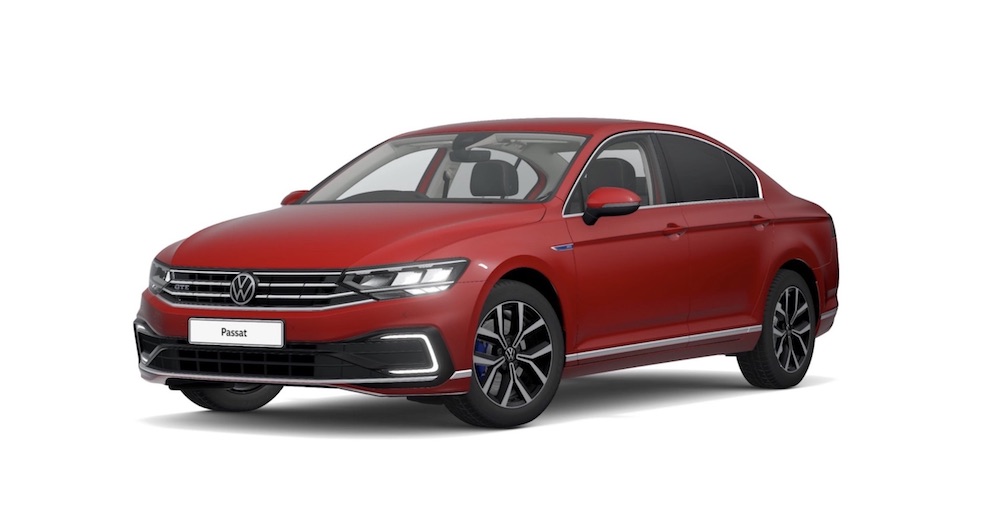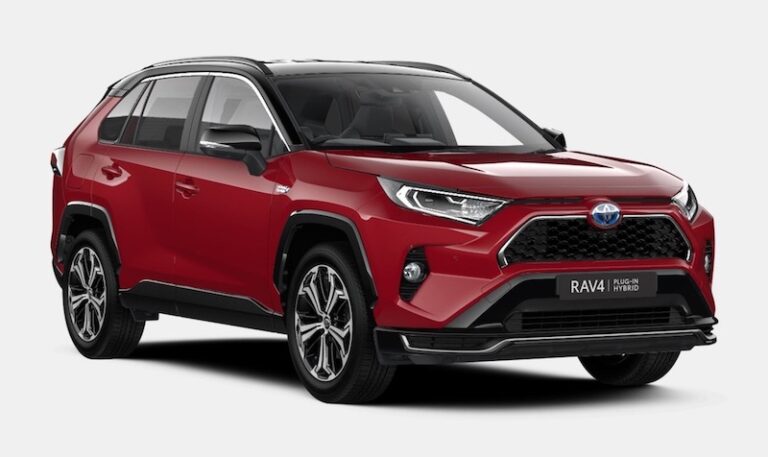Overview
Volkswagen AG, the Germany automotive group is one of the leading automotive companies in the global electric vehicle (EV) industry. Volkswagen has committed to an investment up to Euro 30 billion by 2023. It aims to sell 3 million electric vehicles by 2025 and launch up to 70 new EV models over the next 10 years.
With the launch of its electric vehicle ID. Family, VW is fast cementing a dominant position to become the world’s largest electric vehicle (EV) manufacturer by 2028, with the automotive behemoth planning to manufacturer 22 million electric vehicles. The automotive company currently has a number of battery-electric vehicles (BEVs) and plug-in hybrid electric vehicles (PHEVs) on sale, to include:
- The all-electric VW ID.3
- The all-electric VW ID.4
- The all-electric VW ID.4 GTX
- The all-electric VW ID.5
- The all-electric VW ID.5 GTX
- The all-electric VW ID.7
- The all-electric VW e-up!
- VW Touareg R Plug-In Hybrid
- VW Passat GTE Plug-In Hybrid
- VW Passat GTE Plug-In Hybrid Estate
- VW Golf 8 Plug-In Hybrid
- VW Tiguan eHybrid
Electric Cars: The Basics
For those of you new to zero-emission electric driving, we recommend a read of the following articles:
Sign up to the e-zoomed Electric Living newsletter
The Volkswagen Passat GTE PHEV Saloon
The Volkswagen Passat (B8) was introduced in 2014. The B8 is the eight-generation in the VW Passat series, and it was the first VW passenger car to be based on the stretched version of the MQB platform. The GTE plug-in hybrid electric vehicle (PHEV) variant was unveiled at the 2014 Paris Motor Show and was on sale in 2015.
The VW Passat plug-in hybrid saloon has a 13 kW onboard EV battery, quite typical for PHEVs in this price segment. The manufacturer claims an EV range up to 36 miles (WLTP certified). Even adjusting for real-world driving, the electric car should be able to achieve up to 30 miles, which is similar to other plug-in hybrid electric vehicles (PHEVs) in this segment.
Do keep in mind that the majority of family trips are short distances i.e. school-runs, grocery store, shopping etc. The average distanced travelled in a day in the UK is 30 miles (2/3rd motorists), so a pure electric range up to 30 miles is more than sufficient to take advantage of the benefits of electric driving.
Even, for those that drive to work, driving on electric mode works well, as the electric car can be charged at home and at work (workplace EV charging)! For those weekend getaways, the petrol engine can be utilised for the longer drives.
Taking advantage of the EV range will also require inculcating a habit of charging the EV on a regular basis, which again is as easy as charging a smartphone. We at e-zoomed discourage the use of a domestic 3-PIN plug for charging an electric car. A ‘topping up’ approach to charging will help improve the overall efficiency of the vehicle and also improve the long-term maintenance of the onboard EV battery. Volkswagen offers a 3 years or 60,000 miles warranty.
The PHEV is not DC charging compatible (most PHEVs are not) and has a 3.6 kW onboard charger. The PHEV can be fully charged in 3.4 hours. Using a 3-PIN socket will take up to 5 hours. In any case, we at e-zoomed recommend charging the EV overnight, when the electricity tariff rates are cheaper. Of course, we also encourage using green energy to charge the EV!
Moreover, driving on e-mode improves the efficiency of the electric vehicle i.e. lower motoring costs! Volkswagen claims the PHEV has a fuel economy up to 271.4 mpg. Real-world economy will certainly be lower, but substantially better compared to the conventional internal combustion (ICE) variant.
The 1.4-litre TSI petrol engine is paired with an electric motor. The plug-in electric car can achieve 0-62 mph in 7.4 seconds. The top speed of the EV is 138 mph. The maximum power is up to 218 PS and 250 Nm torque. Certainly suitable for city and motorway driving. Of course, do keep in mind that the EV also benefits from instant torque.
For company-car drivers, there is the added benefit of lower Benefit-in-Kind (BiK-12%) tax bills, given the lower tailpipe emission of the PHEV (26g CO2/km), compared to the conventional internal combustion engine (ICE) variant.
The plug-in electric car does not qualify for the UK government plug-in car grant (PiCG). Bottom-line, electric driving is good for the environment and the wallet. You can lease electric vehicles (EVs) via e-zoomed at very competitive prices!
| PROS | CONS |
|---|---|
| A practical family car that is environment-friendly | Exterior styling does not inspire |
| Cheap to run on zero-emission electric range | Onboard charger limited to 3.6 kW |
| Good space for passengers | Boot space limited due to EV battery |
The Volkswagen Passat Saloon PHEV (credit: VW)
| At A Glance | |
|---|---|
| EV Type: | Plug-In Hybrid Electric Vehicle (PHEV) |
| Body Type: | Saloon |
| Plug-In Car Grant (PiCG): | Not Available |
| Engine: | Petrol/Electric |
| Available In UK: | Yes |
| Variants (2 Options) |
|---|
| Volkswagen Passat GTE (from £37,445) |
| Volkswagen Passat GTE Advance (from £40,135) |
| EV Battery & Emissions | |
|---|---|
| EV Battery Type: | Lithium-ion |
| EV Battery Capacity: | Available in one battery size: 13 kWh |
| Charging: | DC charging not available. Onboard charger 3.6 kW AC (0% – 100%: 3 hrs 40 mins) |
| Charge Port: | Type 2 |
| EV Cable Type: | Type 2 |
| Tailpipe Emissions: | 26g (CO2/km) |
| EV Battery Warranty: | 3 years or 60,000 miles |
| Average Cost Of Residential Charging | |
|---|---|
| Battery net capacity : 8.8 kWh | £1.27 |
| Battery net capacity : 11.6 kWh | £1.67 |
| Battery net capacity : 12.0 kWh | £1.73 |
| Battery net capacity : 13.10 kWh | £1.89 |
| Battery net capacity : 14.10 kWh | £2.03 |
- Note 1: The average cost of residential electricity in the UK varies depending on the region, supplier and type of energy used. An average for the UK is 14.40 p/kWh.
- Note 2: Not all EV manufactures make available the data on net EV battery capacity, and in a number of instances the EV battery capacity advertised, does not state if it is gross or net capacity. In general, usable EV battery capacity is between 85% to 95% of the gross available capacity.
| Charging Times (Overview) | |
|---|---|
| Slow charging AC (3 kW – 3.6 kW): | 6 – 12 hours (dependent on size of EV battery & SOC) |
| Fast charging AC (7 kW – 22 kW): | 3 – 8 hours (dependent on size of EV battery & SoC) |
| Rapid charging AC (43 kW): | 0-80%: 20 mins to 60 mins (dependent on size of EV battery & SoC) |
- Note 1: SoC: state of charge
| Dimensions | |
|---|---|
| Height (mm): | 1457 |
| Width (mm): | 1832 |
| Length (mm): | 4774 |
| Wheelbase (mm): | 2789 |
| Turning Circle (m): | 11.7 |
| Boot capacity (L): | 402 |
| Passat Estate GTE | |
|---|---|
| EV Battery Capacity: | 13 kWh |
| Pure Electric Range (WLTP): | 36 miles |
| Fuel Consumption (mpg): | 271.4 |
| EV Operation Efficiency (Wh/km): | 147.64 |
| Charging: | DC charging not available. Onboard charger 3.6 kW AC (0% – 100%: 3 hrs 40 mins) |
| Top Speed: | 138 mph |
| 0-62 mph: | 7.4 seconds |
| Drive: | Front-wheel drive (FWD) |
| Electric Motor (kW): | N/A |
| Max Power (PS): | 218 |
| Torque (Nm): | 250 |
| Transmission: | Automatic |
| Seats: | 5 |
| Doors: | 4 |
| Unladen Weight (kg): | 1,732 |
| Colours: | 6 |
| NCAP Safety Rating: | N/A |
| Passat Estate GTE Advance | |
|---|---|
| EV Battery Capacity: | 13 kWh |
| Pure Electric Range (WLTP): | 36 miles |
| Fuel Consumption (mpg): | 255.4 |
| EV Operation Efficiency (Wh/km): | 150.24 |
| Charging: | DC charging not available. Onboard charger 3.6 kW AC (0% – 100%: 3 hrs 40 mins) |
| Top Speed: | 138 mph |
| 0-62 mph: | 7.4 seconds |
| Drive: | Front-wheel drive (FWD) |
| Electric Motor (kW): | N/A |
| Max Power (PS): | 218 |
| Torque (Nm): | 250 |
| Transmission: | Automatic |
| Seats: | 5 |
| Doors: | 4 |
| Unladen Weight (kg): | 1,754 |
| Colours: | 6 |
| NCAP Safety Rating: | N/A |
While e-zoomed uses reasonable efforts to provide accurate and up-to-date information, some of the information provided is gathered from third parties and has not been independently verified by e-zoomed. While the information from the third party sources is believed to be reliable, no warranty, express or implied, is made by e-zoomed regarding the accuracy, adequacy, completeness, legality, reliability or usefulness of any information. This disclaimer applies to both isolated and aggregate uses of this information.









































